We brought the Land Cruiser to a halt just outside Kadykchan, a modern-day ghost town in the heart of Siberia.


Eurasia, which encompasses nearly 53 million square kilometers, is the largest landmass on the planet. It’s comprised of two continents and 93 countries, and 72 percent of the world’s population lives within its boundaries. From the glaciated fjords of Norway to Lake Baikal, the deepest and most voluminous freshwater lake in the world, the landscapes of this supercontinent were a visual and emotional assault. From the romance of Prague to the industrial squalor of Moscow to the surprising beauty and warmth of Magadan, the cities and people were equally captivating.
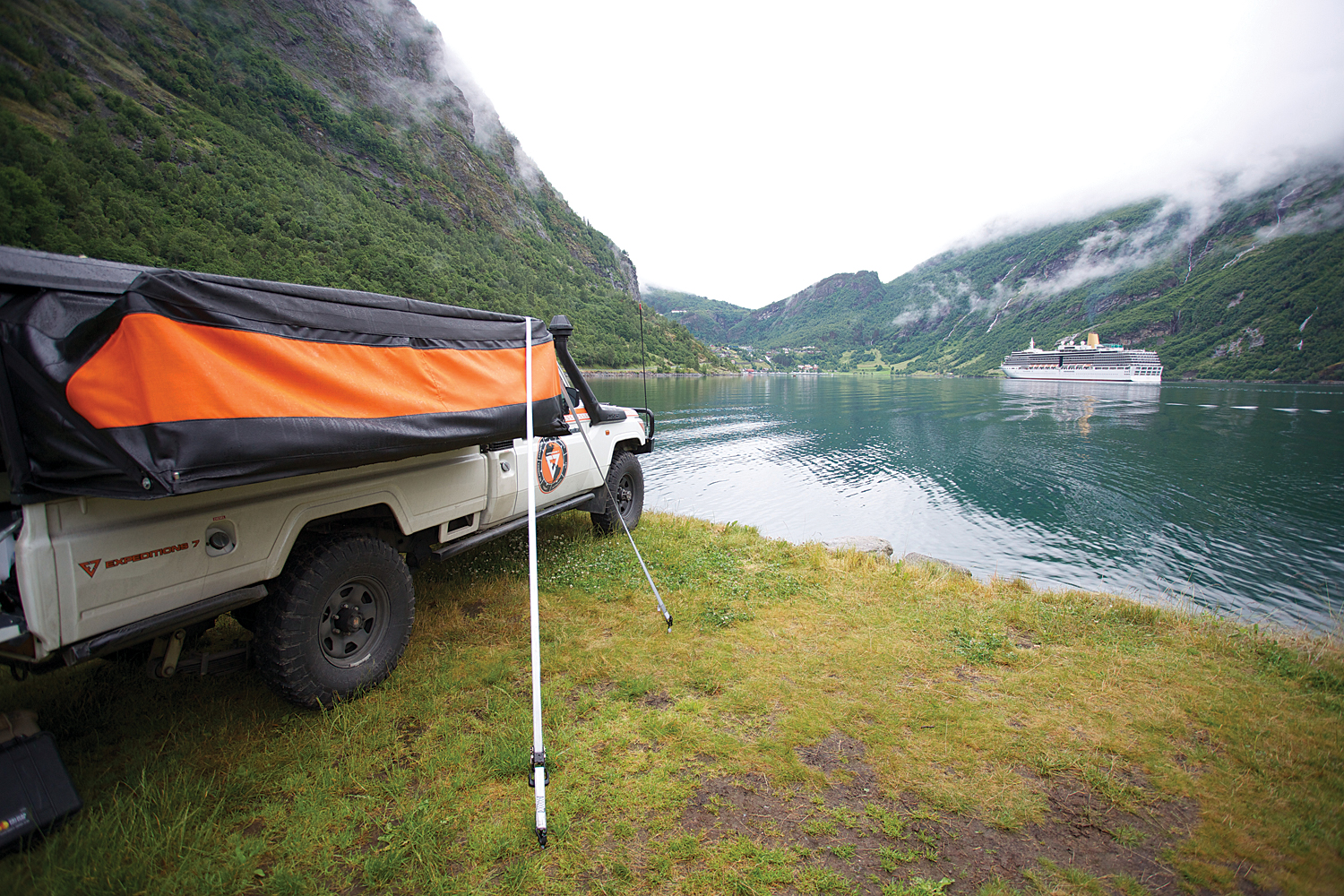
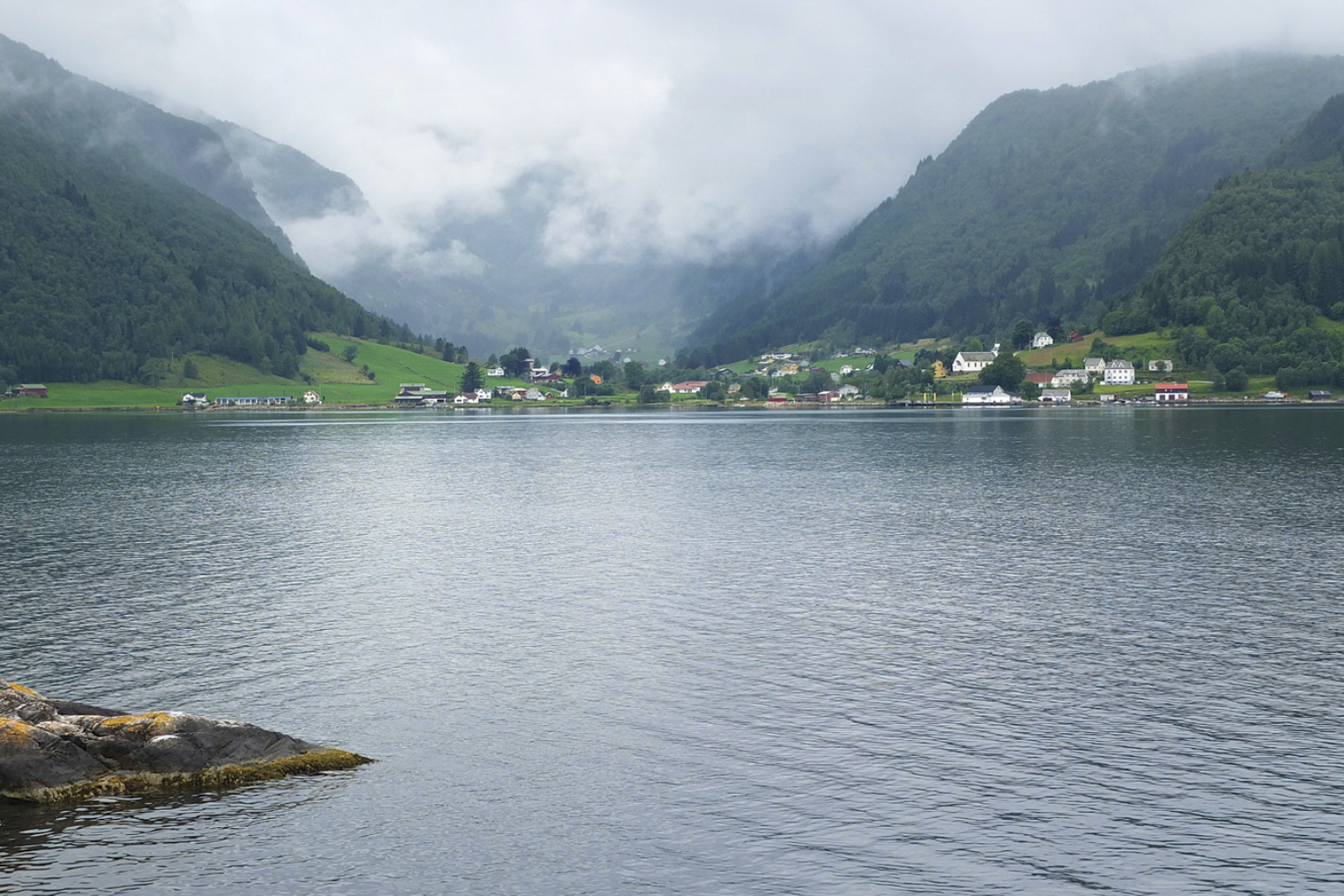

Our team arrived in Nordkapp under heavy fog, completing our drive to the northernmost road-accessible point on the globe. We celebrated while considering the contrasts between this place and the northernmost point in North America―Prudhoe Bay, Alaska. Nordkapp, as well as the rest of Norway, is so thoroughly modern and organized it makes not only Alaska, but also the rest of the United States feel a bit primitive.


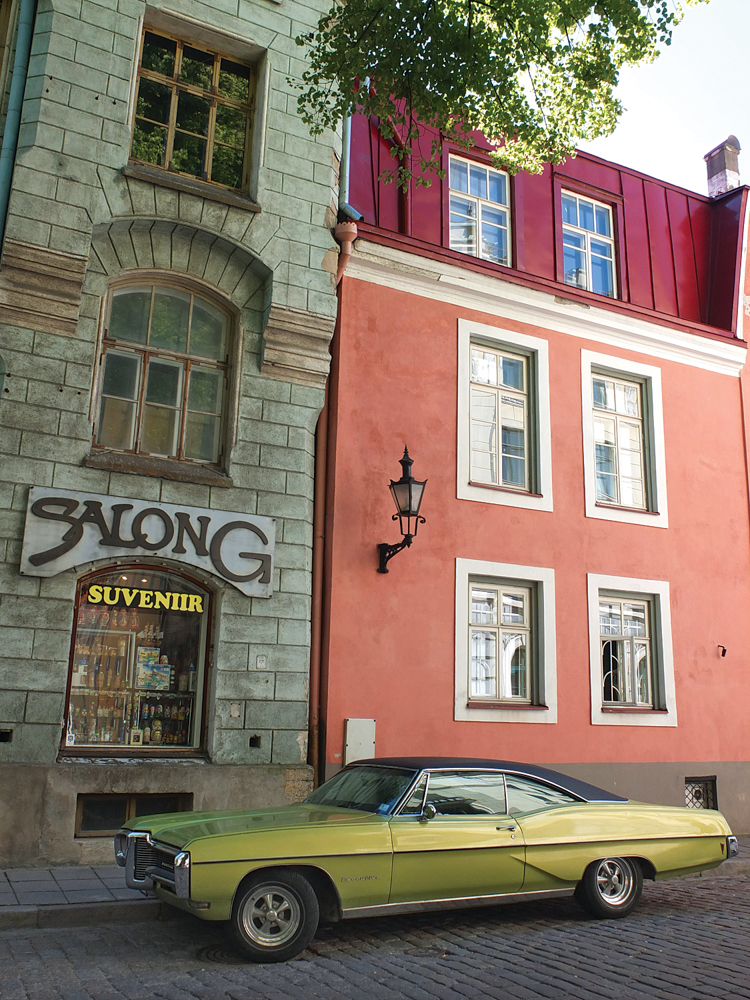

After completing the Scandinavian leg we loaded the Land Cruisers into a ferry at Helsinki, Finland, and crossed the Baltic Sea for Tallinn, Estonia. We particularly enjoyed the old city center and the optimistic outlook of the Tallinn citizens, some of the Eurozone’s newest members. Continuing south, we explored other former Soviet Bloc countries including Latvia, Lithuania, and Poland, pausing to capture a few images of the Land Cruisers juxtaposed with a Cold War-era MiG.

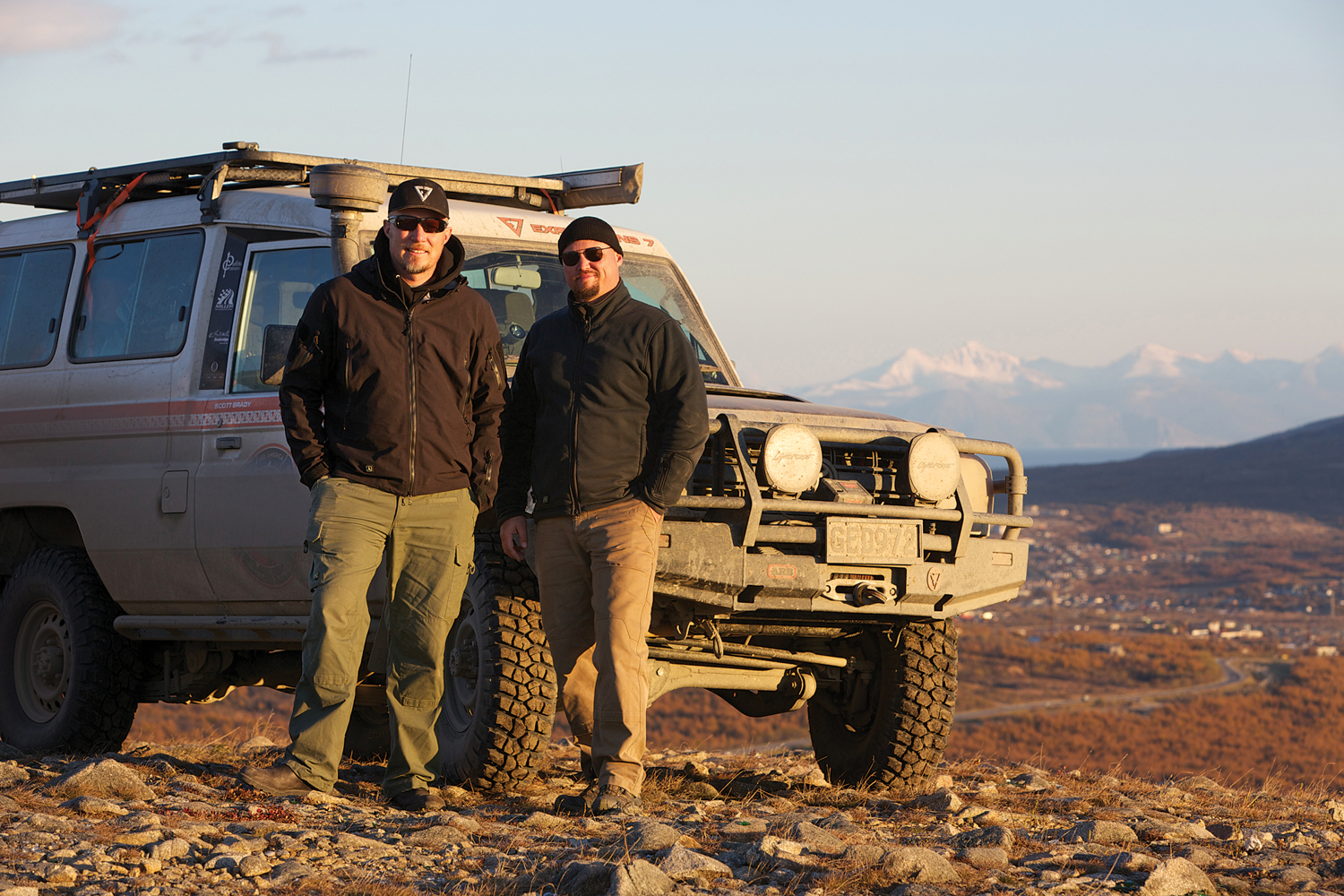

The Czech Republic and the city of Prague marked the end of our European segment. Dirty and well lived-in, we pulled the Land Cruisers into the parking lot of a Holiday Inn. Though we often hope the rest of the world, especially seemingly timeless places like Eastern Europe, will strive to retain their aesthetic autonomy, this is not always the case. We enjoyed Europe, but a very different experience lay just beyond the frontier.


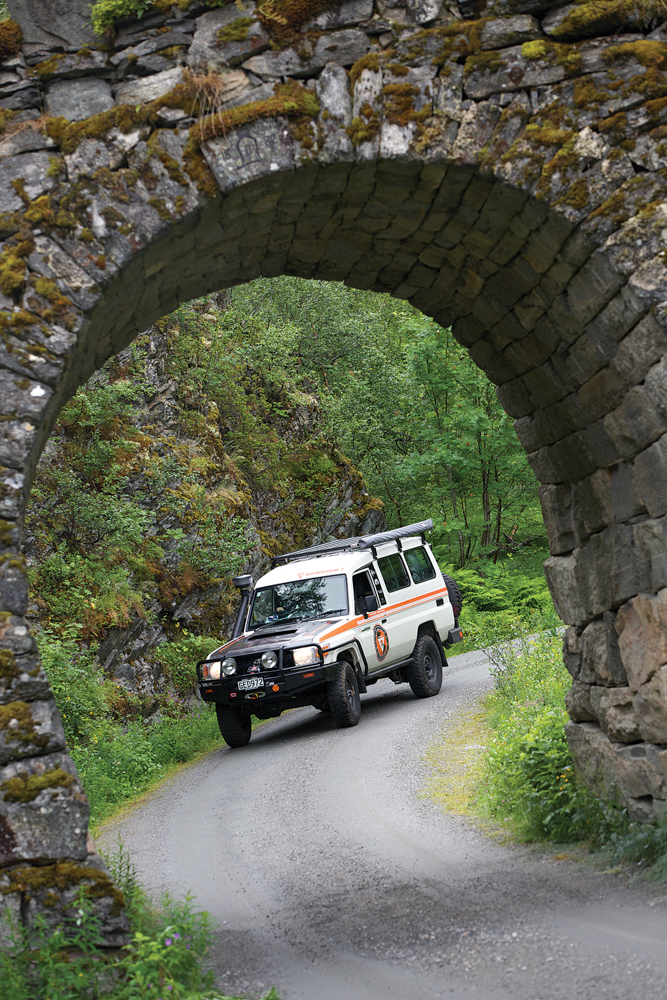
One of the great joys of overland travel is camping in the backcountry, and there are few places more remote than Siberia. From striking camp in the snow to starting the morning fire for coffee and messing with travel mates, Expeditions 7 has become a brotherhood for team members. As we made our way to Russia’s Far East, our campsites began to possess an all-encompassing calm, most sounds completely dampened by falling snow and the often dense and nearly impenetrable forest.

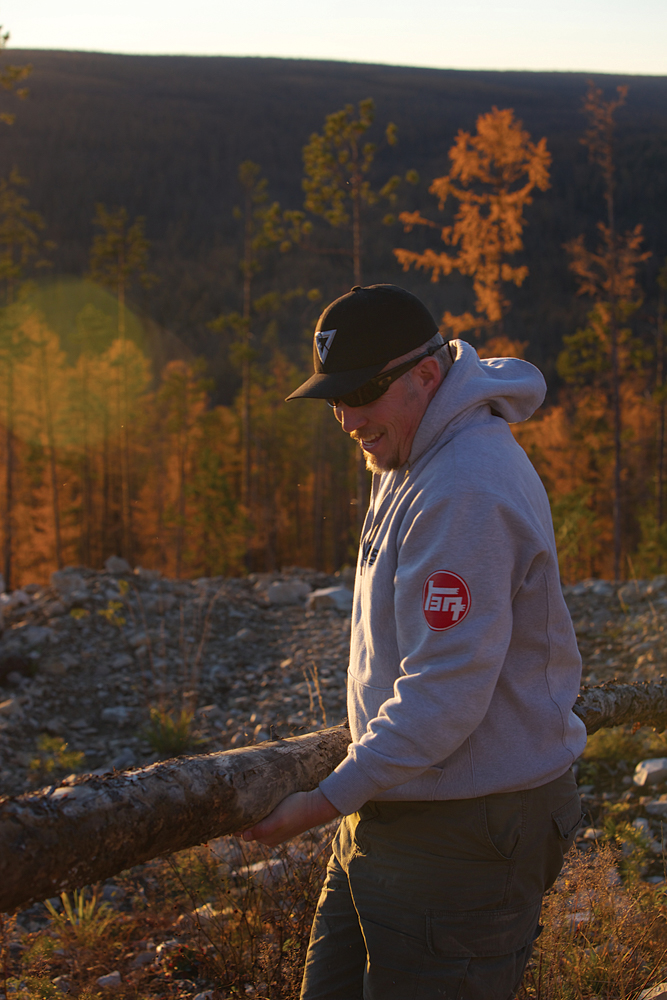


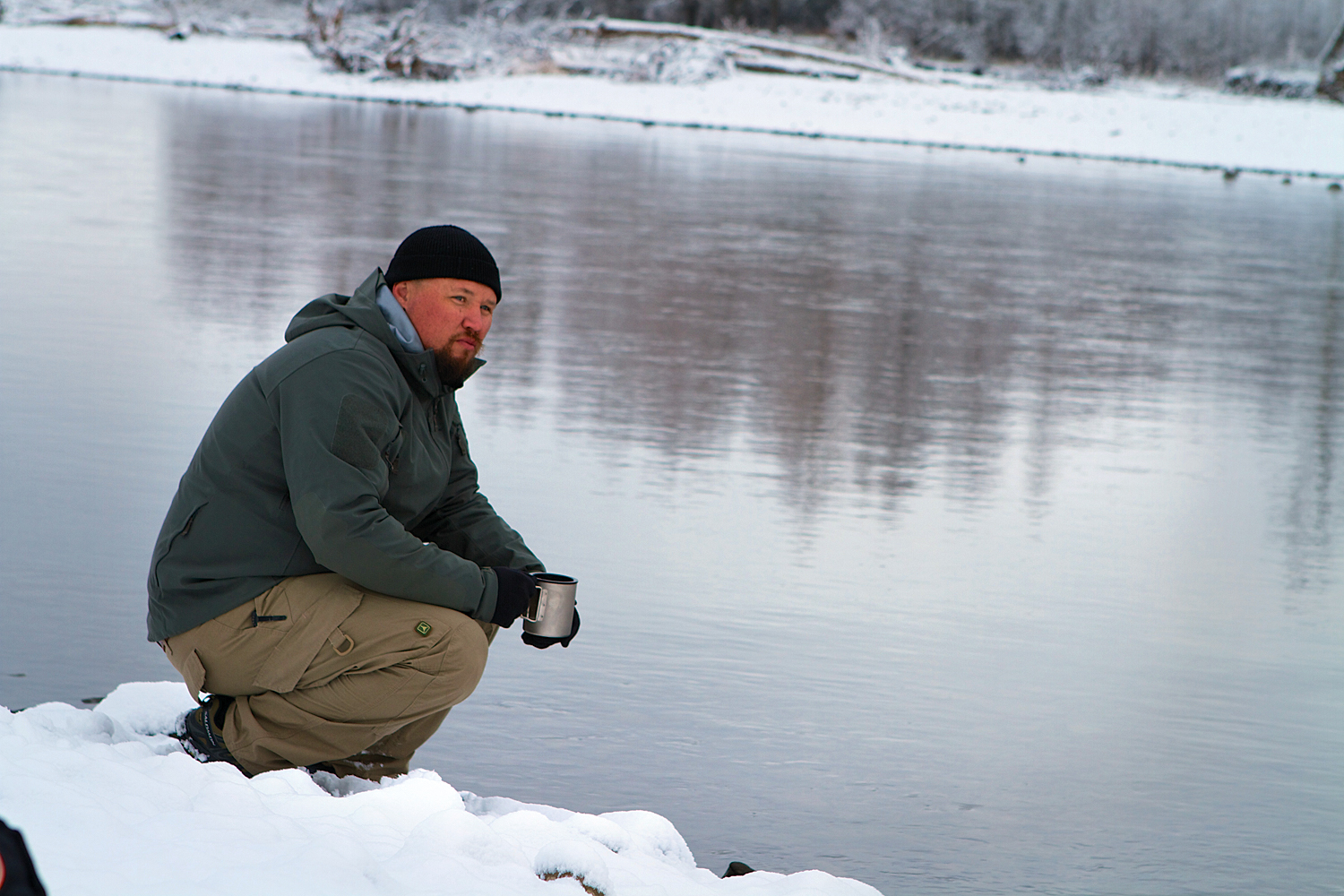
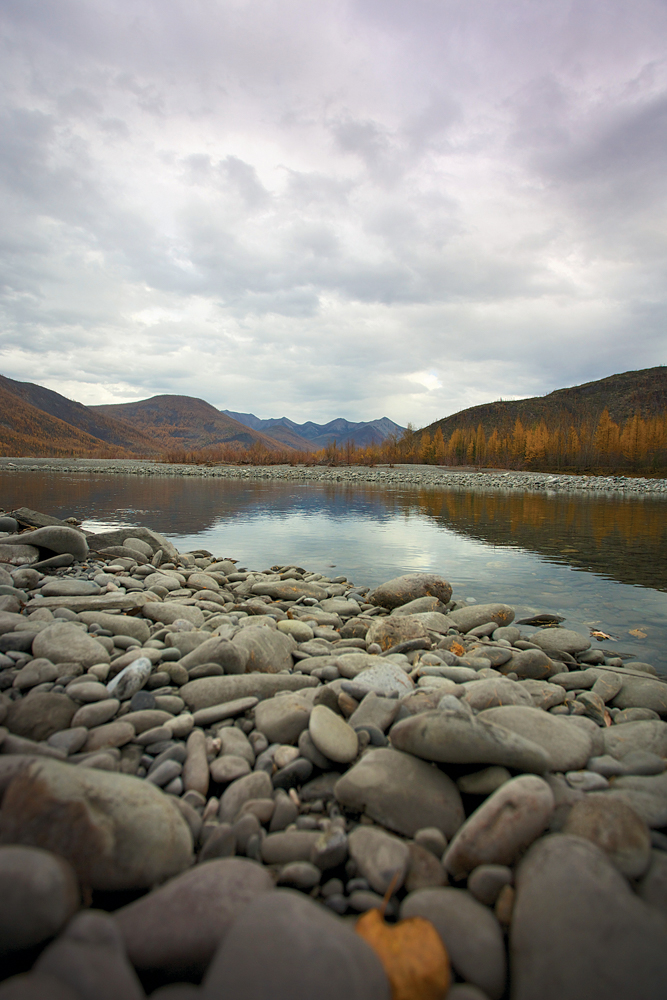

The Aldan River is but a tributary to the mighty Lena River, a moving body of water so massive that ocean-going container ships navigate its depths. However, the Aldan isn’t a meandering stream by any measure. The ferry, which equated to a large barge being pushed along by tugboats, took over an hour to cross the river’s expanse. The ramp was operated by a hand winch with rusted shackles and frayed cables, better suited for an ATV than the hulking steel exit platform. We were followed down the ramp by a couple of semi-trailer trucks and a half-dozen UAZs.
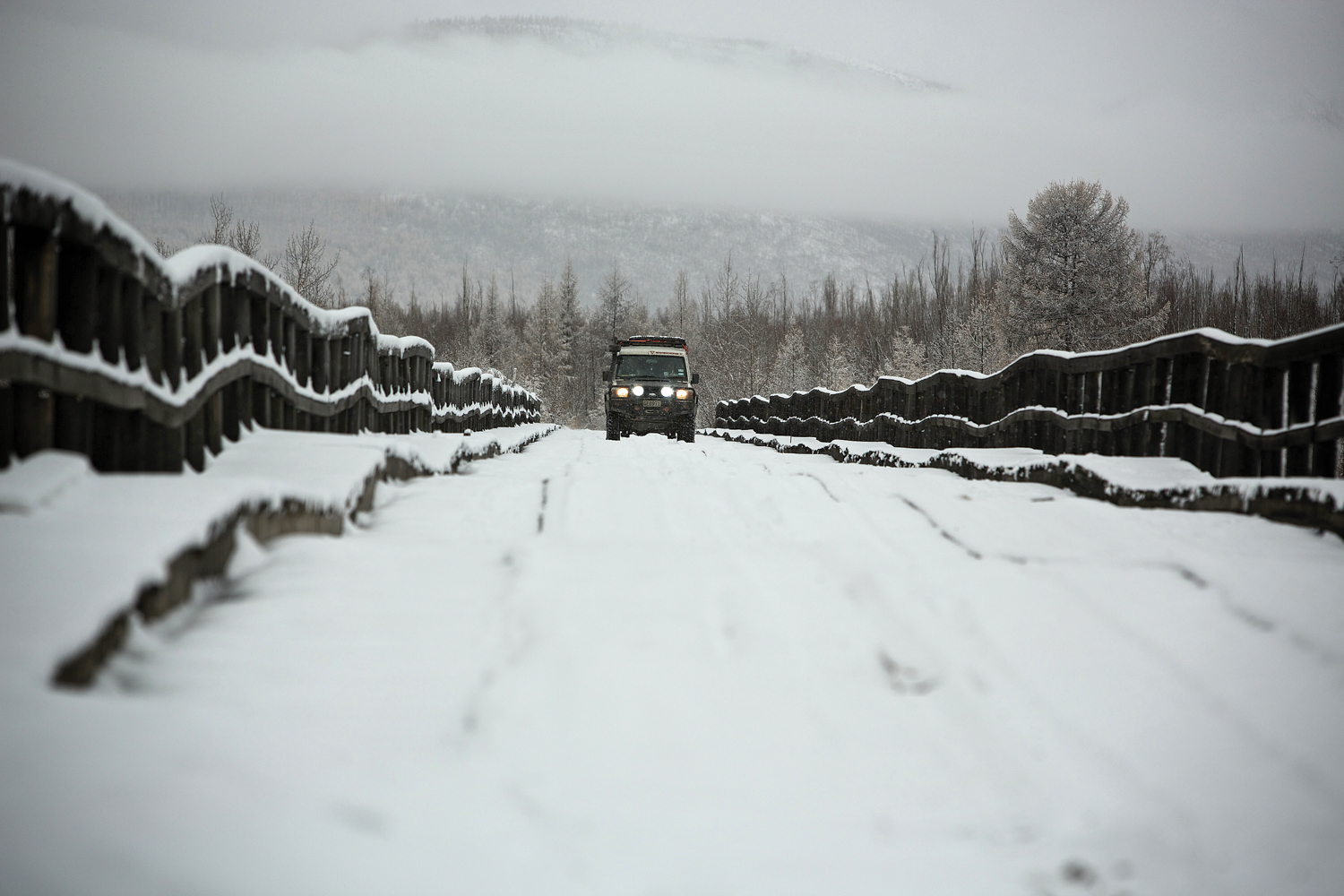
Most of the bridges along the old summer Road of Bones to Tomtor were gone, requiring difficult crossings and ingress/egress from the banks. One bridge in particular, which had the appearance of a mogul field rather than a road, was so bowed and damaged I was sure it would not support the weight of our vehicles. However, there was no other option; each board creaked in protest as we slowly crept across.


The highlight of our Asian journey was the opportunity to drive to Tomtor, Russia, known as the Pole of Cold. This route was built by the Gulag prisoners of the Stalin era, when millions of Russians were sentenced, often without a trial, to a life of labor, or death, in one of the most inhospitable places on the planet. It is said that in a single winter up to 25 percent died of starvation or exposure. Life was of such little value that when a prisoner died, they were often buried under the road surface right where they fell. Despite its horrific past, this region of Russia, which is now in a genuine state of renewal, was my favorite.
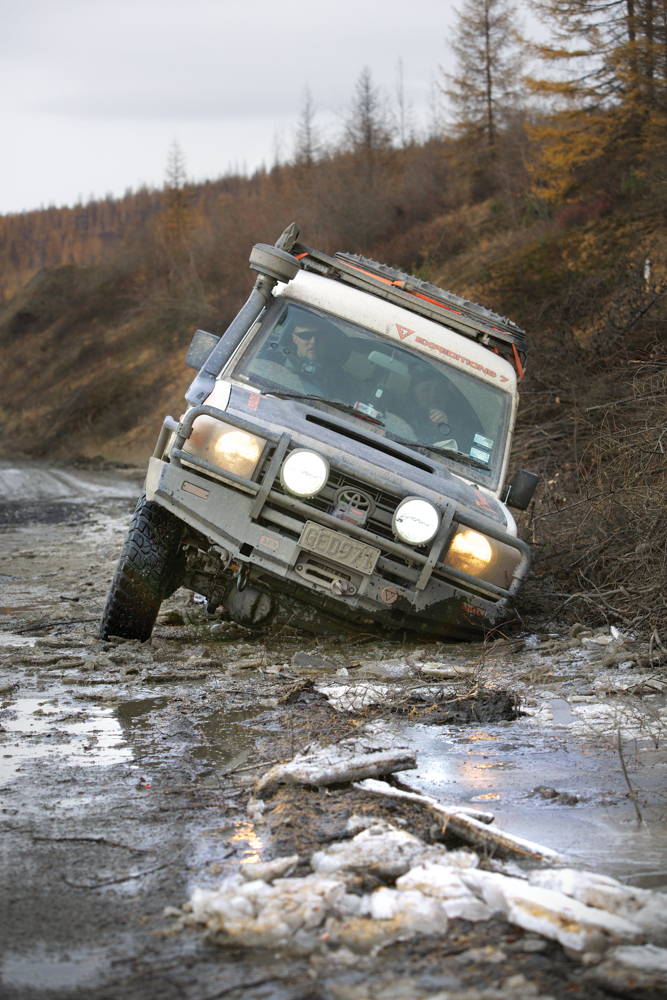

The road, which began with fording a deep river that had claimed the lives of a family a week prior when their UAZ turned over in the current, was a perpetual challenge. Snow began to fall on our first night’s camp and continued all the way to Tomtor, covering the ground with a veil of white. It seemed appropriate given the town’s namesake.
Different from other ghost towns, Kadykchan, which was built for the workers of the regional coal mine, is a modern relic. In the mid- ’90s coal production had declined, and in 1996 the town’s citywide water heating plant exploded, killing a number of workers. The Russian government determined that the repair cost could not be justified, and literally decommissioned the city. It was abandoned almost immediately, its citizens leaving behind anything they could not carry.
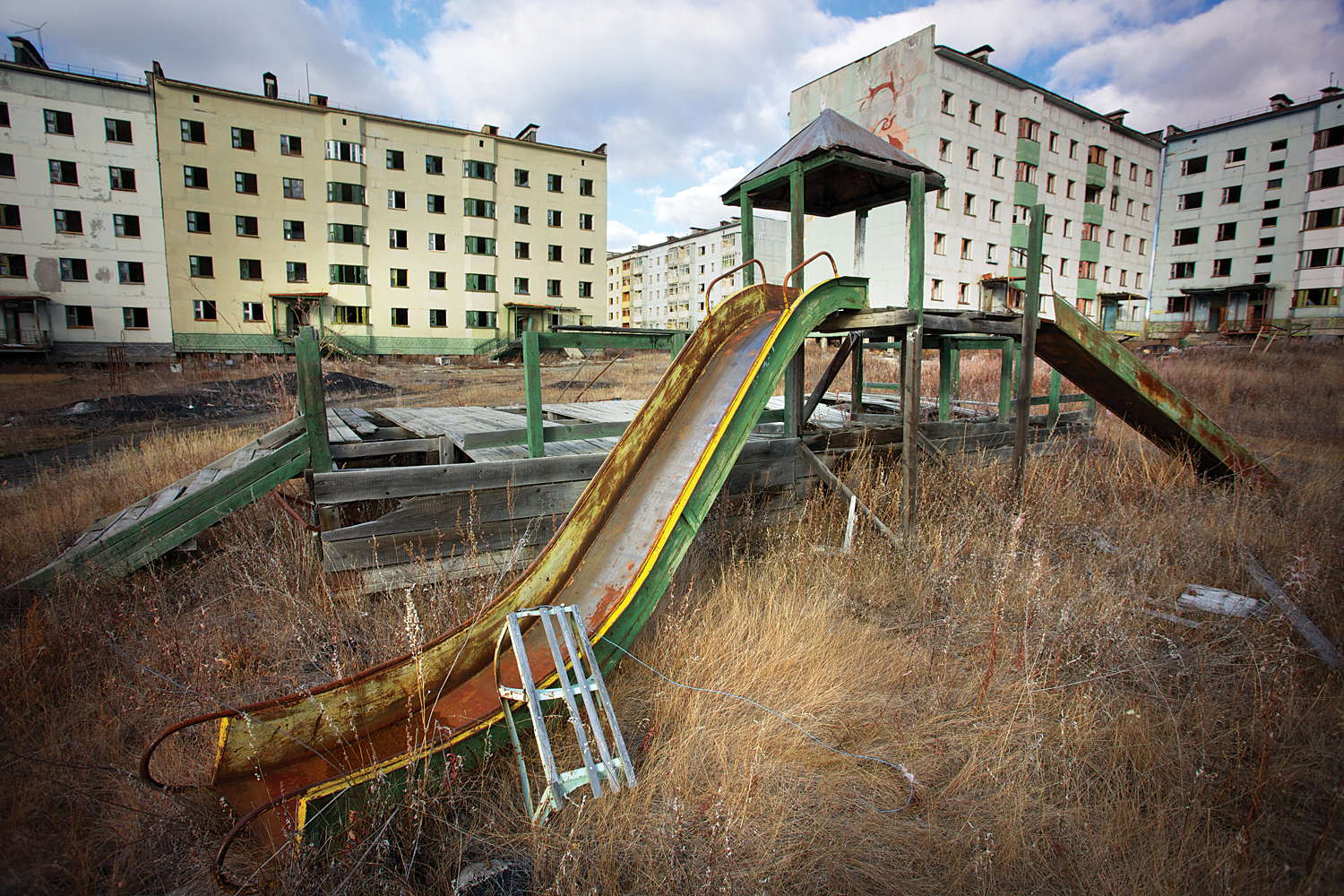
It was an apocalyptic scene―a community of 15,000 souls vanished. In awe of this spectacle, we spent several hours walking through the debris and envisioning not only the prisoners who were forced to build a city in this frozen wasteland, but also the families who lived and worked there. We found the playground particularly haunting, a child’s shoe left mid-step, a sled propped against a playground slide, a swing set rattling in the frigid arctic wind. Stepping into several of the concrete block apartment buildings felt eerie, like we were voyeurs looking into the souls of the past: clothing scattered about under a decaying dresser, water-stained school books in disarray on the floor, and yellowing photos still pinned to collapsing tenement walls. These people, and their dreams, had vanished, and only a few vagrants remained lurking among the shadows.


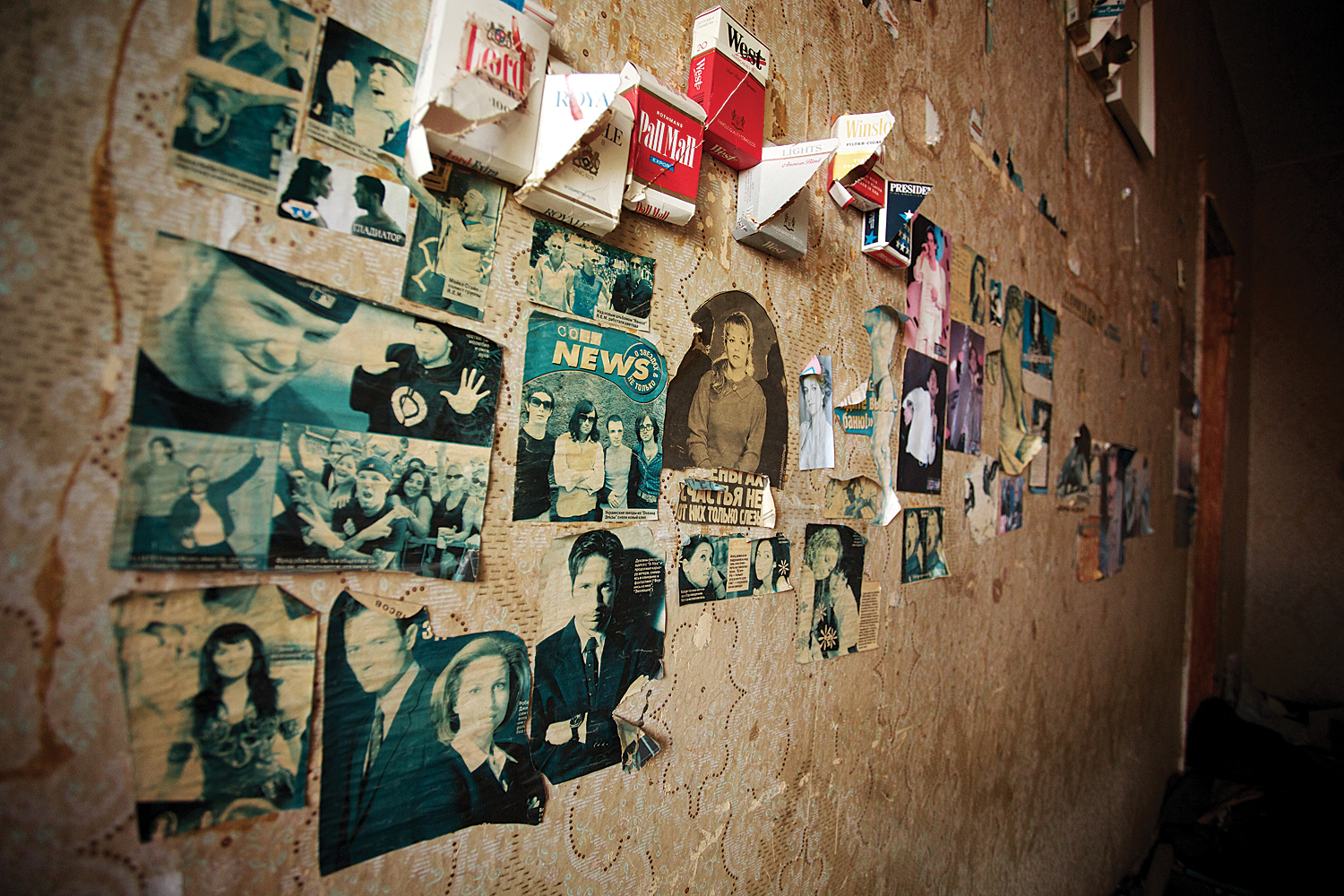
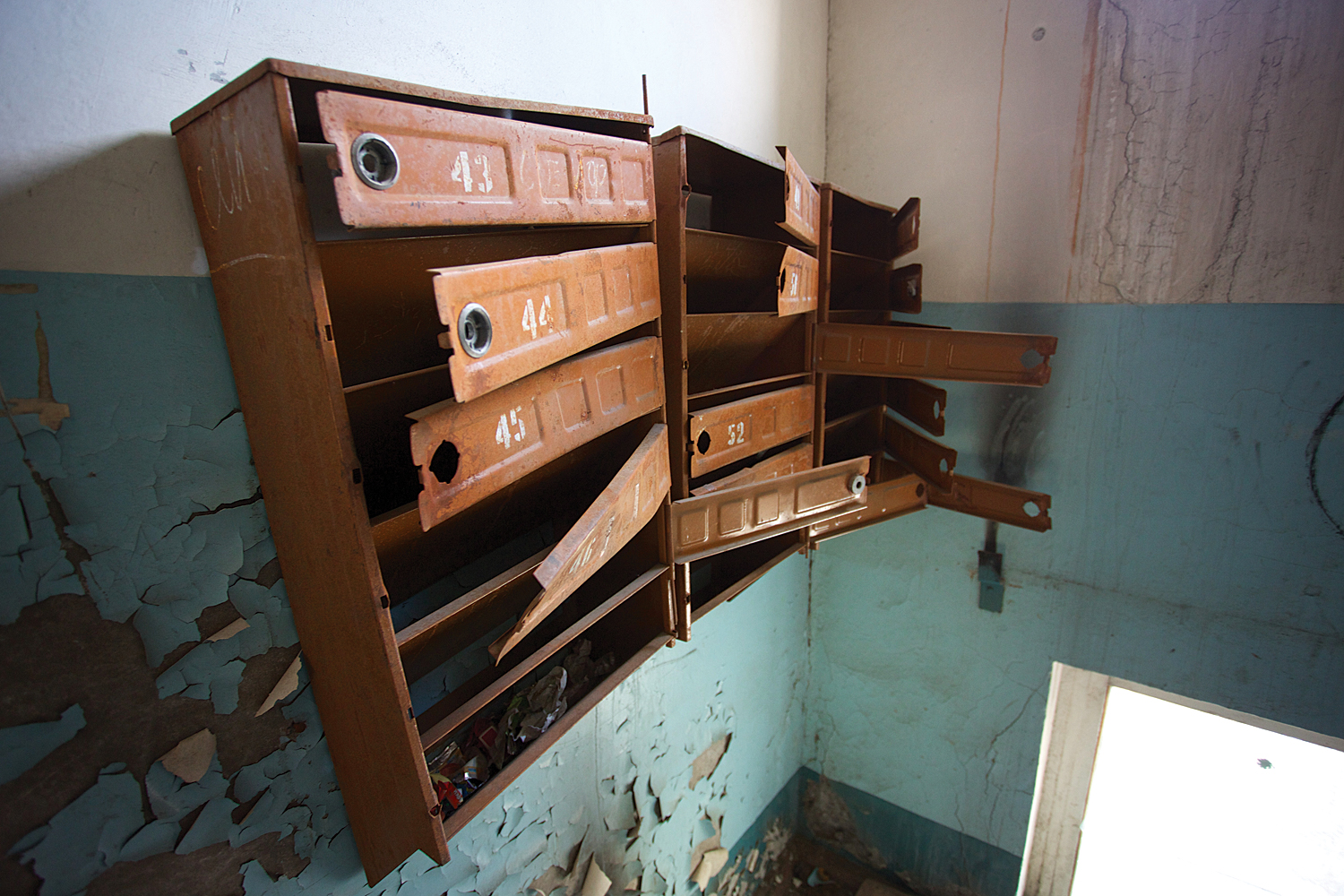
On our way south from Kadykchan we attempted another section of the Old Summer Road, one recommended by a Polish adventurer we’d met who had a Siberian tiger pelt nailed to his wall. This all-dirt track kept us off the M56 for a few days and provided some of the most stunning scenery of the trip. When our detour rejoined the main track just north of Magadan, we were back on asphalt for the first time in weeks; the hum of the tires now louder than the various rattles and squeaks we’d been listening to for many days.
The Road of Bones crosses numerous rivers, and at times, the road was the river. This often pushed the safe limits of depth for both team and truck.
We had made it, and in the process pushed nearly every boundary and comfort zone we’d previously thought possible. The team counted no less than four near-death instances while driving. Road conditions and other drivers, who were most surely emboldened by vodka, were much more dangerous than any we had encountered during decades of international overland treks. When we rolled into Magadan the relief was palpable, not so much because the adventure was over, but that we (and the Land Cruisers) had survived.
Our good fortune was not the case for countless victims of the Stalinist purges and those who died during the construction of the Road of Bones. On a hill above Magadan stands the Mask of Sorrows, a large concrete memorial in sullen form, the brow creating a cross and tears comprising the faces of the millions lost. From one eye rains tears which are made up of faces, bearing marks of the emotionally distraught. Inside is a replica of a Gulag prison cell; the entire memorial is sobering.
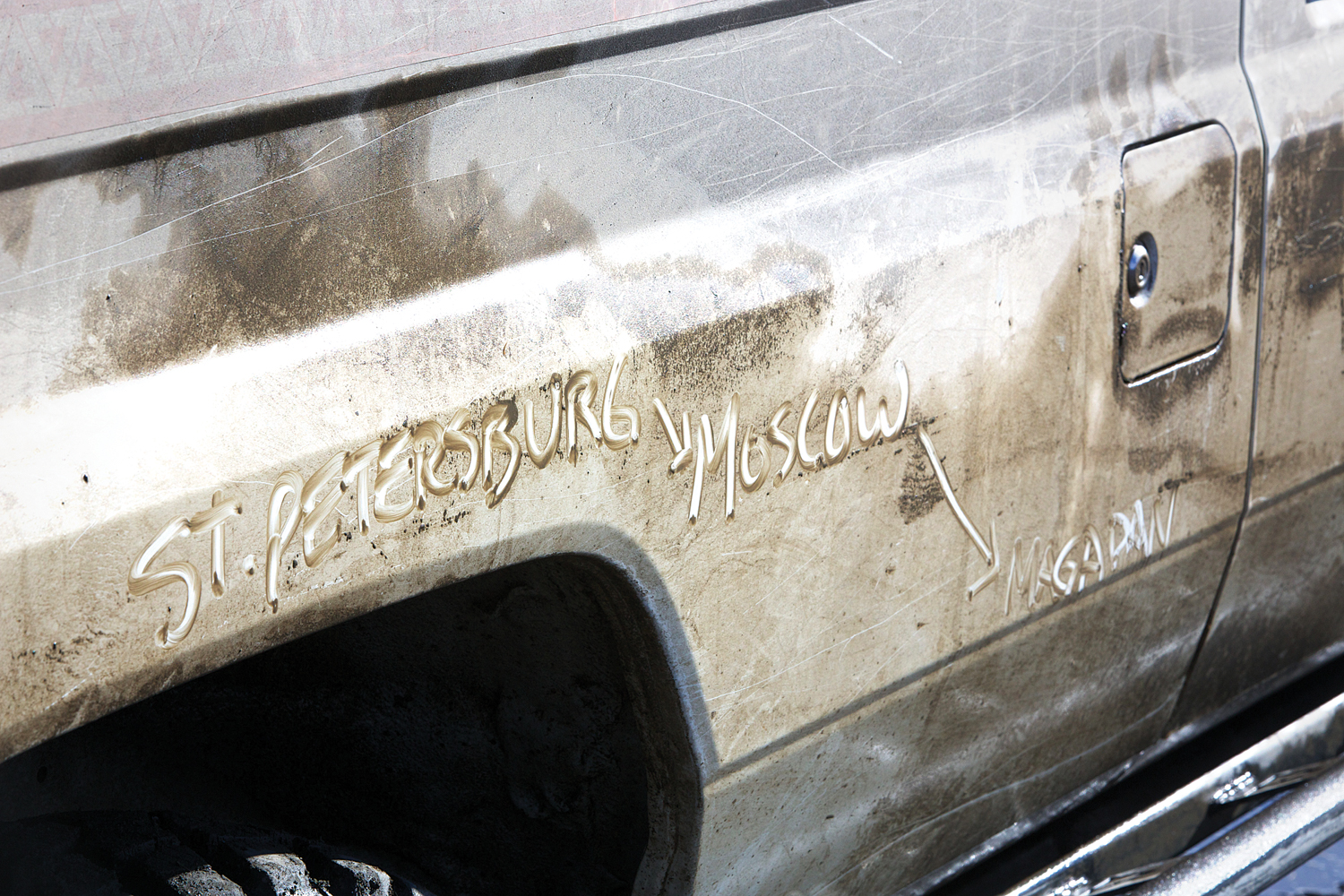
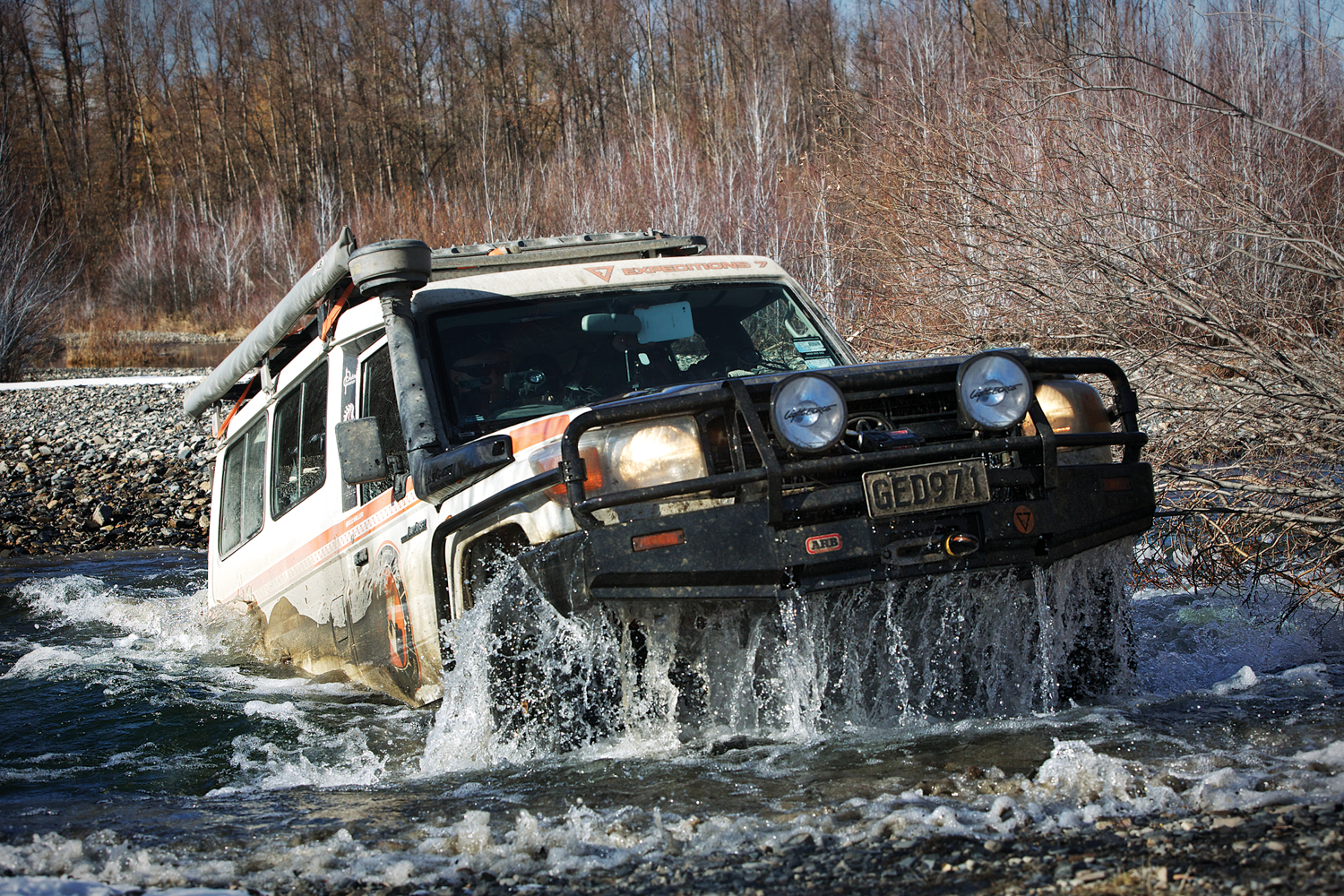
Having completed our circumnavigation of the Northern Hemisphere, we loaded the trucks into a container bound for Australia. The Southern Hemisphere awaited.

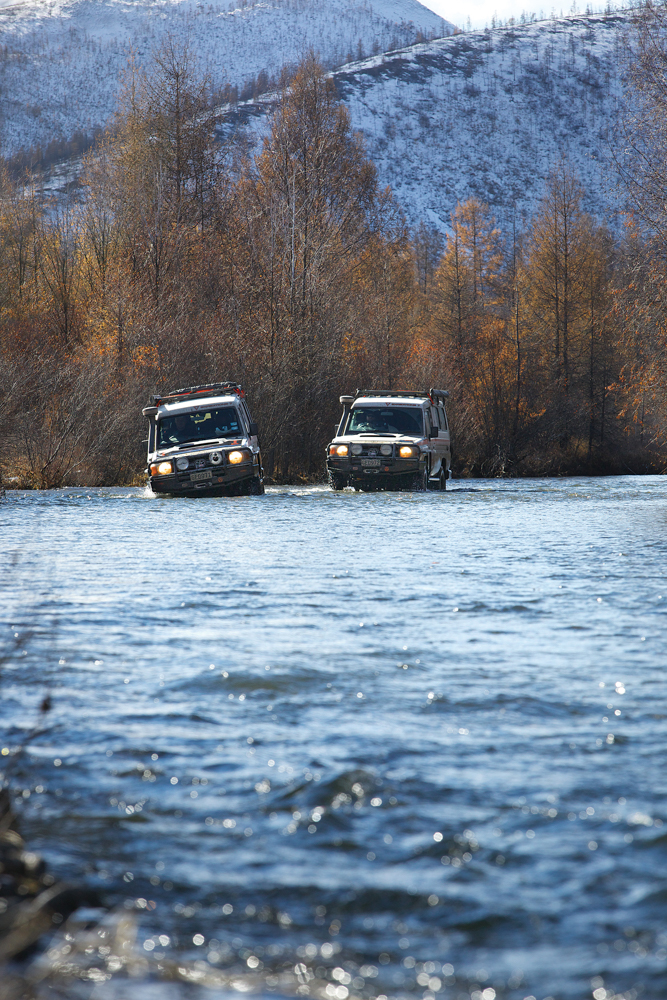
Tomtor, Siberia, is one of the coldest inhabited places outside of Antarctica. At minus 71°F, exposed skin will freeze in less than four minutes. The first brush of arctic wind against your face will induce a shiver and early vasoconstriction, which pulls warm blood from the fingers and other extremities back to the body’s core in an effort to protect vital organs. Death can come quickly at these temperatures, and did for many prisoners held captive in Siberian Gulags (Soviet labor camps) and forced to construct the infamous Road of Bones. Known officially as the M56 Kolyma Highway, it threads its way through more than 2,000 kilometers of Russia’s heartland, from the banks of the Lena River transecting central Russia, to the country’s eastern shore.
With our crossing of North America and Iceland complete, we’d turned our attention toward Europe and Asia. Our plan was to travel from the northernmost navigable road in the world, at Nordkapp, Norway, to Magadan, Russia, the easternmost road-accessible city on the Asian continent. While we could easily have taken a southern trajectory and bounced along the warm Mediterranean coastline, which would have still satisfied the objective, our team was excited to keep the wheels turned north―way north. This would entail passing through 17 countries and traversing nearly 20,000 kilometers.
Nordkapp is located at 71°N, and though it was late June when we arrived, snow still covered the coastline. The summer solstice had just passed, and at these latitudes, the sun never really sets. A 6-hour pseudo-sunset teased us as it drifted across the horizon, casting golden rays through a crystalline atmosphere and prompting us to keep our cameras close at hand. In Oslo, we’d unloaded the vehicles from their shipping containers and pushed north for the fog-shrouded cape. It was a greater distance than driving from London to Istanbul, and we quickly realized that distances on this leg of the expedition would be immense. Norway and Europe surprised us. Not only because of the stunning beauty of glaciated mountains and fjords, but the vibrancy of the region’s cities and people. Scandinavia, which is often lauded as safe and nearly sterile, was magical—a stark contrast to what we would encounter in Russia.
We finished the European segment in Prague, Czechoslovakia, where we restocked supplies and arranged for some much-needed service on the Land Cruisers before turning north again towards Estonia. After spending a few days in the ancient walled city of Tallinn, Estonia, where there were 24-hour guards posted in our hotel parking lot, we’d been lulled into a temporary sense of security. It was on the morning of our departure toward Saint Petersburg that our idyllic view of Estonia was shattered…quite literally. Under the cover of darkness, thieves had slid past the guards and between the two Troopies. They smashed out one of the side windows and took several Red Oxx duffle bags full of clothing. Glass was everywhere and the interior was now exposed to a mounting storm. While we were certainly frustrated by the loss of gear, it was the window, which would be nearly impossible to source for the next 12,000 kilometers, which posed the biggest challenge. If there is one thing I’ve learned during my travels, it is to improvise. We taped plastic trash bags over the opening and pushed on (we would later fabricate a plexiglass replacement).
With fresh visas and two Land Cruiser Troopies, we organized our papers, pulled up to the frontier border crossing at Koidula, Estonia, and exited the European Union. Once the heart of the former USSR, Russia is the largest country on earth, and crossing it would prove to be our most ambitious and dangerous drive yet. In Yakutsk, on the banks of the Lena River, we’d pick up the Road of Bones, which would lead us across the semi-frozen reaches of Russia’s Wild East.



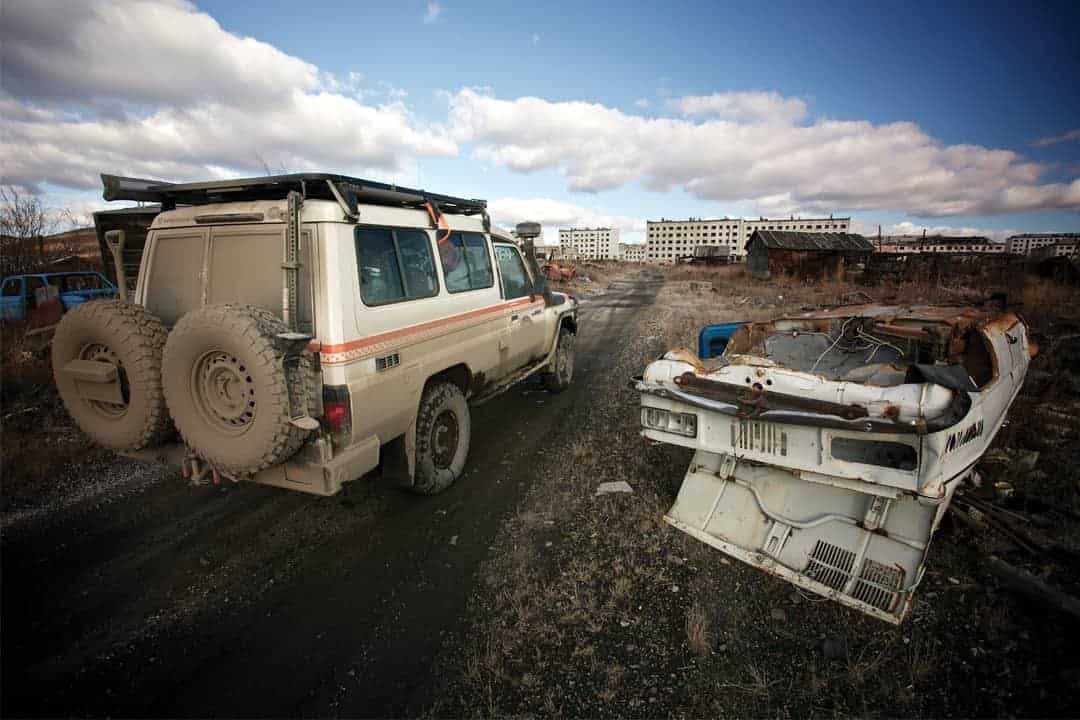
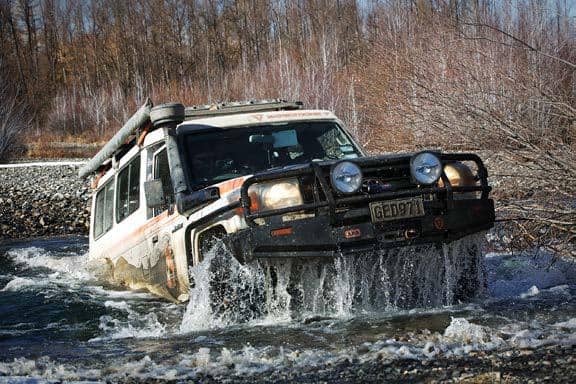

One Comment
JULIO GARCIA
February 14th, 2019 at 4:11 pmFollowing the adventure. Great read.